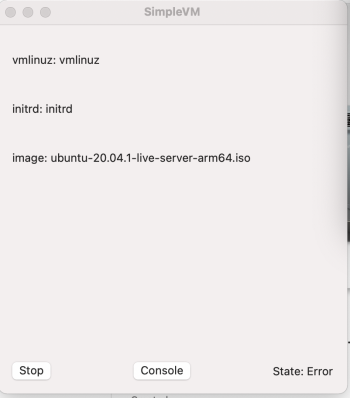So, here is how I got my Linux setup to work. A bit different from what you guys are doing, I'm guessing. I didn't have to pass in kernel/initrd:
Code:
#!/bin/bash
./qemu-system-aarch64 \
-M virt,highmem=off \
-accel hvf \
-m 4G \
-smp 2 \
-cpu max \
-drive file=storage.img,index=0,media=disk \
-serial stdio \
-netdev type=user,id=net0 \
-device virtio-gpu-pci -vga none \
-device nec-usb-xhci \
-device usb-kbd \
-device usb-tablet \
-device intel-hda -device hda-duplex \
-device virtio-net-pci,netdev=net0,romfile="" \
-bios QEMU_EFI.fd
Make sure there's a storage.img. I used qemu-img to create it.
If you need to install using the live CD, just add this (make sure to remove it after you're done with installation):
Code:
-device file=PATH_TO_LIVE_CD,index=2,media=cdrom
Boots every time. Though... you may lose the cursor if/when you get into the UI.
To fix that, either set "SWcursor" to "true" in xorg.conf (you may have to recreate this in Recovery if you're on a newer version of Ubuntu). Or... add this:
Code:
-display default,show-cursor=on
^ what that does is basically just "unhide" your mouse cursor when it enters the window. Would be useful in case it gets hard to see where you're pointing to. But I'd recommend doing "SWcursor" fix if you have the time to spare.
And yeah, V2 is far better. There are some other stuffs that can still be patched (like hidpi support, for instance), but it is... pretty much just what I'll want out of an eventual Parallels/VMWare release anyways. It has been useful and super stable!


